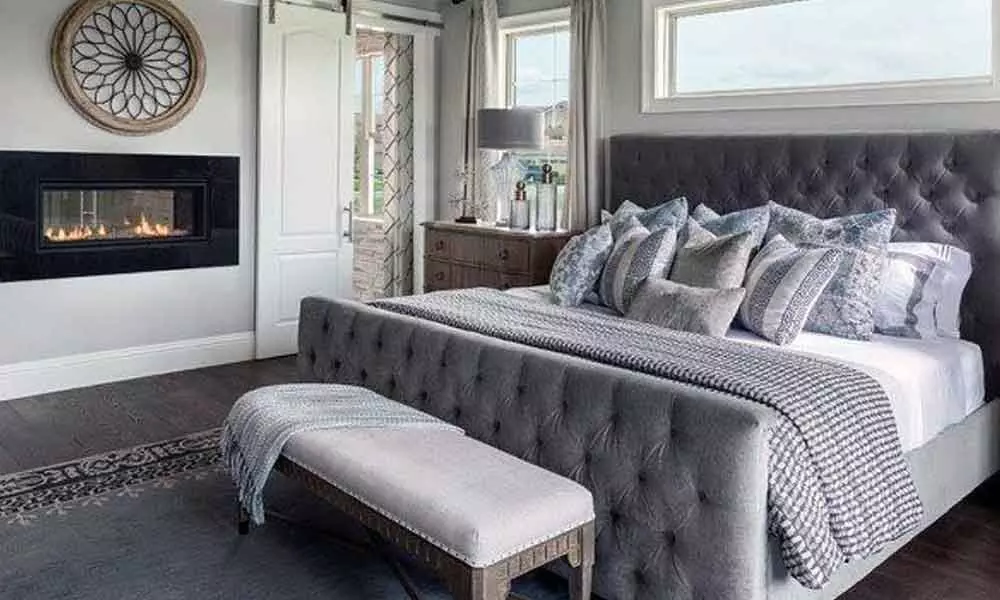Live
- 'Scam of Rs 46,300 crore in BBMP', K'taka BJP leader files complaint with ED
- Govt’s bank guarantee waiver to cut financial burden on telcos, boost digital infra: Industry
- Google App Adds Search Links to Webpages: Details
- Rising star Vaishali Rameshbabu to return for Norway Chess Women 2025
- Sikkim CM calls on Guv, extends greetings on Constitution Day
- Narendar Kumar Ale’s Innovative Approach to Integrating AI and ML for Sophisticated Frameworks and Data Analytics
- New vaccine offers high protection against malaria
- Mumbai Indians (MI) Squad for IPL 2025: Key Players, Auction Purchases, and Team Overview
- BJP MLAs stage protest over arrest of ISKCON monk in Bangladesh
- Global foldable smartphone shipments decline in Q3, Samsung leads
Just In
How to select flooring for each room in your home


How to select flooring for each room in your home
Are you upgrading the flooring in your home? Each room and space has different levels and types of activity, so it’s always a good idea to select different flooring finishes for different rooms.
Are you upgrading the flooring in your home? Each room and space has different levels and types of activity, so it's always a good idea to select different flooring finishes for different rooms. The choices you make will impact your décor budget and the aesthetics of your home, and there are several important considerations you must keep in mind.
Ask yourself these questions:
l Which rooms are most used?
l How often are you willing to vacuum or sweep and mop the room?
l What is your budget?
l Do you have elders or pets in the house?
Dipti Das, AVP-Design , HomeLane India's preferred home interiors brand shares some practical tips and flooring ideas for each room in your home!
The foyer
Your foyer usually receives a lot of foot traffic, and needs durable flooring that is easy to clean. Think of pets or kids who never wipe their feet and track in mud, and also think of dripping umbrellas during the monsoons. Ceramic or vitrified tiles of the non-skid variety are your best bet. Also, if you are using an area rug, be prepared to vacuum often.
Pro tip: Make sure that you have a doormat right outside the door to take the worst of the beating!
Living and family rooms
These spaces are where you can really exercise all your options! Here you can consider using wooden or laminated flooring, vitrified tiles or natural stone. If you are using tile or stone floors, in order to avoid monotony, you could try inlay work in marble or granite. Create a focal point and work your patterns around it, or try a border all around the room with a 'carpet' pattern in a different colour. Different spatial definitions can be created with area rugs.
Pro tip: Remember that your flooring colour should match your overall colour palette for the room.
Bedrooms
For those of us who are used to turning on the air conditioning at night, fully carpeted floors work very well in bedrooms. Bedrooms do not get very dirty and carpeted floors are easier to maintain in bedrooms rather than in rooms with heavier footfalls. Dust levels will be typically low and it is very easy to vacuum these rooms often.
Pro tip: Fluffy shag rugs feel great underfoot, especially first thing in the morning—so do think of placing an area rug close to the bed. Your bare feet will thank you for it!
Hardwood floors or wooden laminate floors also work very well in bedrooms and add an air of cosiness and warmth that is conducive to great sleep. Don't forget the soft rug next to the bed, for your feet to sink into when you wake up!
Children's rooms
Children's bedrooms and play areas need durable surfaces that can be cleaned easily, but should also be soft underfoot. You can afford to be at your creative best and play around with colours and finishes. Many people like to use vinyl floors in children's rooms, but do keep in mind that it is not a natural material. Low-quality vinyl could let out toxic emissions for a few days or weeks after the floor is installed.
Interlocking tiled rubber mats are a lovely option for the play areas. Rubber ticks all the right boxes in a children's room: it cushions falls, is hard wearing and can be cleaned easily.
Pro tip: Choose a high quality product that does not give off the characteristic rubber odour, as it could get irritating after some time.
Kitchen and dining areas
Kitchen and dining areas with hard floors are practical, and vitrified or ceramic tile or stone floors work best. It should be possibly to easily mop up spills, and the floor should be hard wearing and durable. Keep in mind that repetitive movement of dining chairs on the floor can cause scratches. For these reasons, you should avoid carpets and wooden or laminate flooring in these areas.
Pro tip: Remember that if the surface of marble is not sealed well, it will react with any acidic materials (lime, citrus, some harsh cleaners) and with coloured substances like turmeric. So avoid using marble in kitchens and food prep areas.
Bathrooms
Bathroom tiles must be anti-skid as the floors can get very slippery when wet, especially in the wet areas of your bathroom. This is especially important if you have elders in the house. Vitrified or ceramic tiles are the most practical options, and are available in a wide variety of colours and patterns to suit your taste. Avoid tiles with a glossy surface and polished granite.
Pro tip: Surface- flamed granite slabs are a good option if you wish to use natural materials in your home.

© 2024 Hyderabad Media House Limited/The Hans India. All rights reserved. Powered by hocalwire.com






